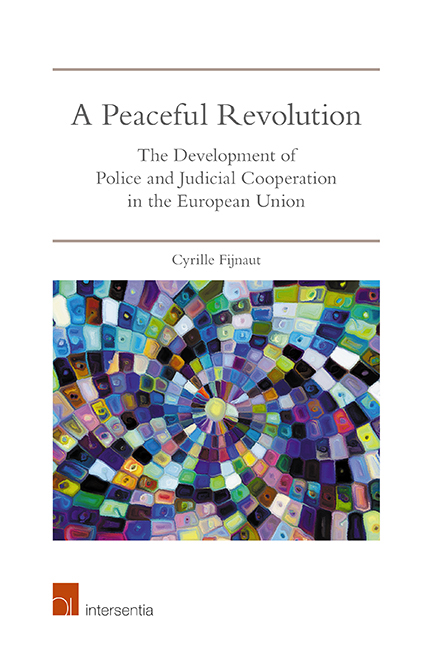Book contents
- Frontmatter
- Preface
- Contents
- List of Acronyms and Abbreviations
- Chapter 1 General Introduction
- PART I THE HISTORICAL BACKGROUND TO POLICE AND JUDICIAL COOPERATION IN THE EUROPEAN UNION
- PART II THE FOUNDATION OF POLICE AND JUDICIAL COOPERATION IN THE EUROPEAN UNION
- PART III THE CURRENT STATE OF POLICE AND JUDICIAL COOPERATION IN THE EUROPEAN UNION
- Chapter 7 The Treaty of Lisbon and the Stockholm Programme
- Chapter 8 The Treaty of Lisbon and the European Agenda on Security
- Chapter 9 General Conclusion
- Bibliography
- About the Author
Chapter 8 - The Treaty of Lisbon and the European Agenda on Security
from PART III - THE CURRENT STATE OF POLICE AND JUDICIAL COOPERATION IN THE EUROPEAN UNION
Published online by Cambridge University Press: 09 November 2019
- Frontmatter
- Preface
- Contents
- List of Acronyms and Abbreviations
- Chapter 1 General Introduction
- PART I THE HISTORICAL BACKGROUND TO POLICE AND JUDICIAL COOPERATION IN THE EUROPEAN UNION
- PART II THE FOUNDATION OF POLICE AND JUDICIAL COOPERATION IN THE EUROPEAN UNION
- PART III THE CURRENT STATE OF POLICE AND JUDICIAL COOPERATION IN THE EUROPEAN UNION
- Chapter 7 The Treaty of Lisbon and the Stockholm Programme
- Chapter 8 The Treaty of Lisbon and the European Agenda on Security
- Chapter 9 General Conclusion
- Bibliography
- About the Author
Summary
INTRODUCTION
The superficial evaluations of the Stockholm Programme also addressed the question of what should happen when this programme came to an end on 1 December 2014. After the necessary exchange of documents, this question was answered by the European Council, the Council and the Commission in April 2015 with a renewed Internal Security Strategy (hereinafter: Strategy), which was replaced by the blueprint for a Security Union one year later in April 2016. Because this Strategy and this blueprint largely form the framework within which policy has developed in recent years, the creation of the Security Union is the subject of section 8.2 of this chapter.
As stated in the conclusion of the previous chapter, in June 2014 the Commission considered that in the coming years the focus should be on implementing and consolidating the policies pursued and strengthening their practical implementation, in particular by improving the exchange of information between police and judicial authorities in the member states. And the Commission was not alone in this view. As early as 18 November 2013, a number of member states – Estonia, Finland, Germany, Hungary, Sweden, Slovenia, the Netherlands, Germany and the United Kingdom – had already set out their views on the future development of justice and home affairs policy in a brief note. The idea behind the document was that in the coming years there should be consolidation of what had been achieved in this area and, therefore, above all, efficient and effective implementation of existing policy. This was all the more important because, in accordance with Protocol 36 to the Treaty of Lisbon, the restrictions on the exercise of powers by the Commission and the Court of Justice would cease to apply on 30 November 2014. In other words, the last thing these member states wanted was a radical overhaul of the current policy.
However, things turned out completely differently, under the influence of three major societal developments. Developments that explain not only why the transition from a renewed Strategy to the idea of a Security Union was made possible in 2015 – 2016, but also why an important part of the programme that the Commission and the Council had set out in 2014 – 2015 could be implemented.
- Type
- Chapter
- Information
- A Peaceful RevolutionThe Development of Police and Judicial Cooperation in the European Union, pp. 583 - 718Publisher: IntersentiaPrint publication year: 2019



